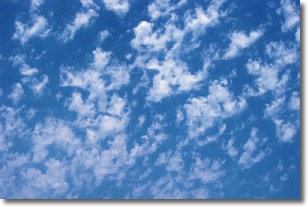Weather Alert in Colorado
Hydrologic Outlook issued May 8 at 1:46PM MDT by NWS Grand Junction CO
AREAS AFFECTED: Archuleta, CO; Delta, CO; Dolores, CO; Eagle, CO; Garfield, CO; Gunnison, CO; Hinsdale, CO; La Plata, CO; Montezuma, CO; Montrose, CO; Ouray, CO; Pitkin, CO; San Juan, CO; San Miguel, CO
DESCRIPTION: ESFGJT Risk of areal flooding and elevated stream flows from rapid snowmelt ...EXISTING CONDITIONS... Recent storms have brought several inches of new snow to mid to high elevations (8500' to 10,000') over the San Juans mountains, nosing along the Divide across Central Colorado. With forecast temperatures running 5 to 15 degrees above normal and the potential for showers and storms along the Divide each afternoon through the weekend, this region of western Colorado is vulnerable to enhanced runoff and elevated stream flows from rapid snowmelt. ...PRECIPITATION... Isolated to scattered showers and storms developing each afternoon favor high terrain across the southwest San Juans and along the spine of the Divide. Due to warming conditions, precipitation in the form of rain is possible as high as 10,000'. Although anticipated storm totals are low, generally 0.1" to 0.2", rain on snow could enhance the rate of snowmelt. ...STREAMFLOW CONDITIONS AND RUNOFF FORECASTS... Streams and rivers in the area will see elevated flows of dangerously cold water over the next several days. Low-lying areas across mountainous terrain (8500' to 10,000') are most susceptible to swelling of area streams and/or localized inundation. Stay away from fast moving water and exercise caution near riverbanks and streams. Updated weather and water products and forecasts are available from the NWS Grand Junction's website at: Www.weather.gov/gjt
INSTRUCTION: N/A
Want more detail? Get the Complete 7 Day and Night Detailed Forecast!
Current U.S. National Radar--Current
The Current National Weather Radar is shown below with a UTC Time (subtract 5 hours from UTC to get Eastern Time).

National Weather Forecast--Current
The Current National Weather Forecast and National Weather Map are shown below.

National Weather Forecast for Tomorrow
Tomorrow National Weather Forecast and Tomorrow National Weather Map are show below.

North America Water Vapor (Moisture)
This map shows recent moisture content over North America. Bright and colored areas show high moisture (ie, clouds); brown indicates very little moisture present; black indicates no moisture.

Weather Topic: What is Evaporation?
Home - Education - Precipitation - Evaporation
 Next Topic: Fog
Next Topic: Fog
Evaporation is the process which returns water from the earth
back to the atmosphere, and is another crucial process in the water cycle.
Evaporation is the transformation of liquid into gas, and it happens because
molecules are excited by the application of energy and turn into vapor.
In order for water to evaporate it has to be on the surface of a body of water.
Next Topic: Fog
Weather Topic: What are Fractus Clouds?
Home - Education - Cloud Types - Fractus Clouds
 Next Topic: Freezing Rain
Next Topic: Freezing Rain
A fractus cloud (scud) is a fragmented, tattered cloud which has
likely been sheared off of another cloud. They are accessory clouds, meaning they
develop from parent clouds, and are named in a way which describes the original
cloud which contained them.
Fractus clouds which have originated from cumulus clouds are referred to as
cumulus fractus, while fractus clouds which have originated from stratus clouds
are referred to as stratus fractus. Under certain conditions a fractus cloud might
merge with another cloud, or develop into a cumulus cloud, but usually a
fractus cloud seen by itself will dissipate rapidly.
They are often observed on the leading and trailing edges of storm clouds,
and are a display of wind activity.
Next Topic: Freezing Rain
Current conditions powered by WeatherAPI.com




